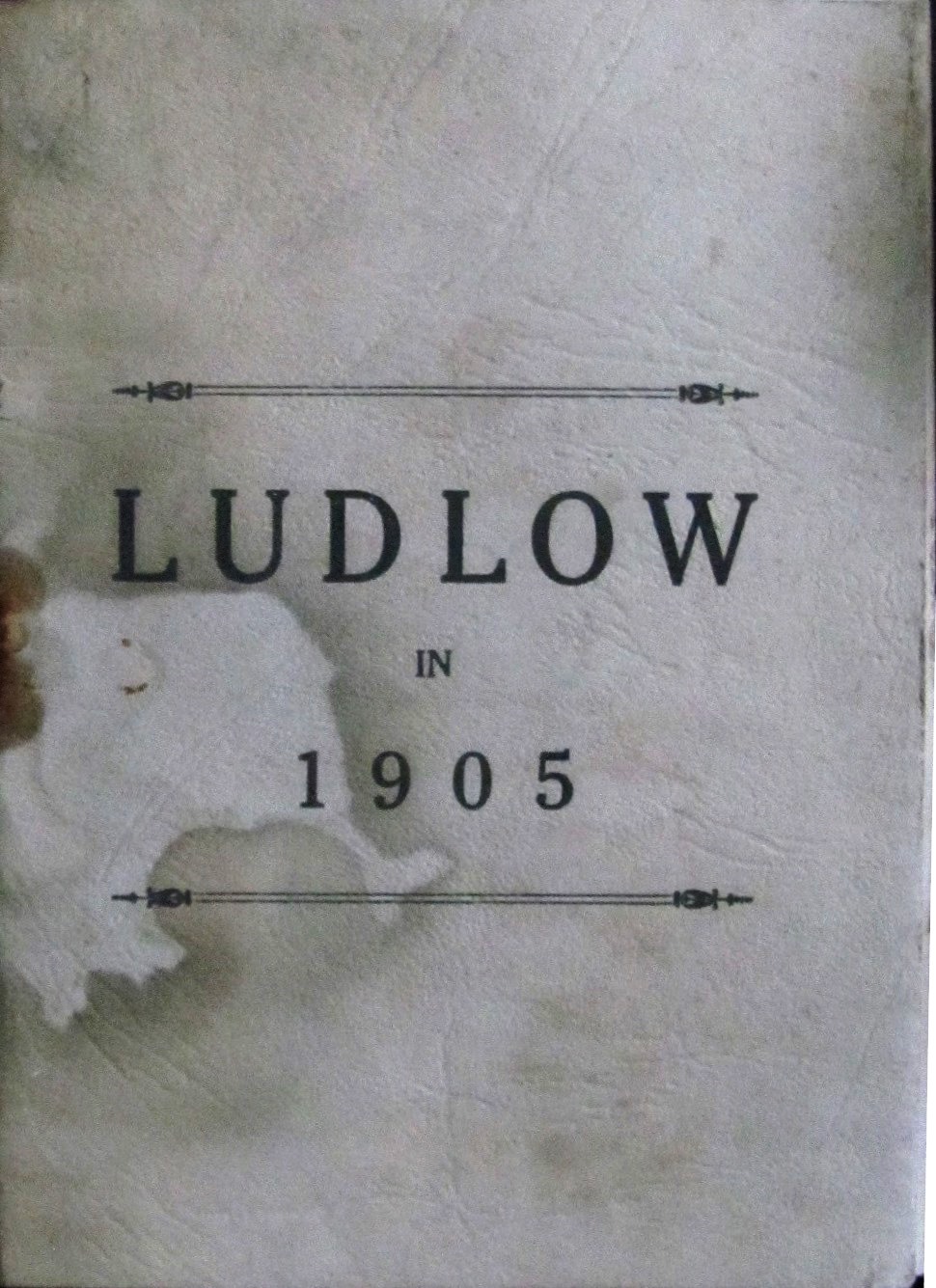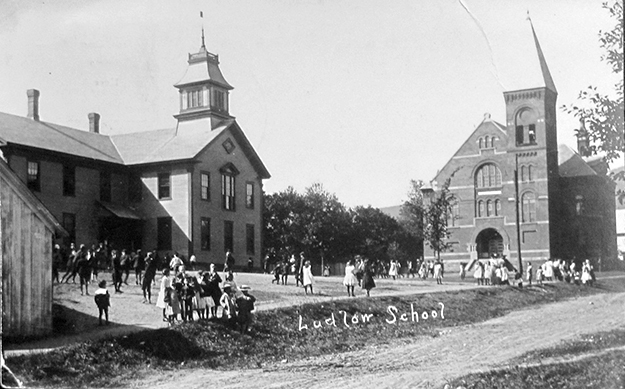 The photo with this article is a Black River Academy souvenir. It was published in 1955. It’s a look back at old Ludlow from 1905 class members. In part, it reads:
The photo with this article is a Black River Academy souvenir. It was published in 1955. It’s a look back at old Ludlow from 1905 class members. In part, it reads:
“Alumni Day, June 18, 1955
On this, our Fiftieth Anniversary, why not turn back with us for a look at Ludlow as we remember. At your leisure it might be interesting to note the changes that have come about.
In 1905 Ludlow had been a chartered town for 144 years.
The Tax Rate was: Town $1.63—Village 45c;
The Population was 2,042;
Main Street was, and is, about 1,026 feet above sea level and Mt. Okemo is 3,372 feet above sea level.
There were no paved roads at this time in the town or village. Sidewalks were paved on some streets. There were some paved walks from one side of the street to the other.
Water and sewer service had been in use seven years.
Electric light service had been in use four years.
The Fletcher Memorial Library was being used for the fifth year.
Telephone service had been in use seven years.
The Ludlow Opera House had been in use only two years but was very busily engaged in presenting travelling shows. Motion pictures were just starting and were few and far between. (The Opera House, as we called it, burned and in 1923 the present Town Hall was erected).
Our manufacturing consisted of the Ludlow Woolen Mill, Black River Woolen Mill, Verd Mont Woolen Mill, Fullam Chair Factory, Agan’s Shoddy Mill, Hathorn’s Horse Collar Shop, Keating’s Cigar Manufacturing Shop, Morgan’s Dress Shop, Harlan Graham’s Woodworking Shop, Warner’s Machine Shop, Harry Lawrence’s Woodworking Shop, Billado and Blanchard’s Sawmill. (The last two were burned out during this year of ’05).
This was the year the Jewell Brook Mill, which was to mean so much to Ludlow, was nearly completed to open March 1906.
There were two printing offices – the Vermont Tribune and the R.S. Warner shop. The Tribune office was ‘the first place of industry’ to install an electric motor.
The Ludlow House and the Goddard House were two busy hotels. There was only one ‘restaurant’ in town.
Four livery stables with between 60 and 80 horses furnished transportation to nearby places. On Wednesdays, “Drummer Day,” it was almost impossible for a local to hire a team because of the big demand by the travelling salesmen. Four Blacksmith Shops were busy most of the time.
There were eleven passenger trains out of town every day and on Sundays a paper train early in the morning going north.
Autos were few – probably no more than six were owned by locals.”
In 1905 there were 408 pupils enrolled in the schools in Ludlow. In the village was the Andover Street School, the graded school on High Street, now occupied by the Locker Plant.
There were no hot lunches at that time. The hickory rod was in use and probably needed.
Baseball and Football were played for years. B.R.A. was proud of its teams…
Junior Proms were not on the school calendar. Instead of “Proms” they were called “Receptions” and always held in some church vestry with marching as the chief amusement. Dancing was prohibited. One class put on a dance and the next day expulsion was the word heard in school. Later that year the business men sponsored a dance for the graduating class.
The class of ’05 was the 70th class to graduate from B.R.A. and the third class to hold their exercises in the first Town Hall.”
The last page is a list of 1905 students:
“50-YEAR ALUMNI CLASS
Harlan E. Aldrich, Springfield, Vt.
Vera A. Giddings, Springfield, Vt.
Francis L. Keating, Portland, Me.
Harry N. Lamere, Ludlow, Vt.
Mabel S. Martin (Mrs. Freeman Tilden), British Columbia
Lillian M. Wilson (Mrs. Clarence Pratt, Deceased).”

The other photo with this article is a “real photo postcard,” as we know them in the trade. It would date from 1907 to 1915. These photographers used a large wooden camera, on a wooden tripod. Instead of roll film you might have seen, these photos were taken on a 5 by 7 inch glass plate. This would be the negative. In this photo, the photographer, or his assistant, wrote in white letters directly on the glass plate. From these negatives postcards were published and sold to travellers or locals.
This week’s old saying: “Figures don’t lie, but liars sure can figure.”